Found a total of 650 related content

What are the java modifiers?
Article Introduction:This article comes from the Java development introductory column. It introduces the relevant knowledge of Java modifiers to everyone. It has certain reference value and I hope it can help everyone. Java modifiers are divided into: 1. Access control modifiers; 2. Non-access modifiers.
2020-05-27comment 02642

Summary of java modifier knowledge points
Article Introduction:This article is from the Java introductory tutorial. It introduces the relevant knowledge of Java modifiers to everyone. It has certain reference value and I hope it can help everyone. Modifiers in Java are divided into class modifiers, field modifiers, and method modifiers.
2020-08-04comment 01507

What are the java access control modifiers?
Article Introduction:There are four types of java access control modifiers, namely public, protected, private, and default access modifiers. Detailed introduction: 1. Public, public is the loosest access control modifier. Modified classes, methods and variables can be accessed by any other class. When a class, method or variable is declared as public, they can be accessed anywhere be accessed, whether it is a class in the same package or a class in a different package; 2. protected modifier, etc.
2023-09-20comment 0718
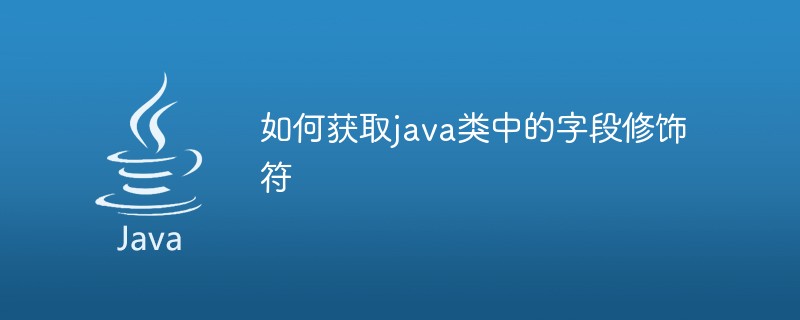
How to get field modifiers in java class
Article Introduction:1. The fields in the description class have many modifiers, such as public, private, transient, etc. Java provides an API to get the modifier of a class, but what you get is an int type. Fortunately, Java provides modifier classes to determine the resulting integer. 2. Instance publicclassMain{publicstaticinta=1;publicstaticvoidmain(String[]args)throwsNoSuchFieldException{Classc=Main.class;Fieldfield=c.getField("a&q
2023-05-16comment 0722
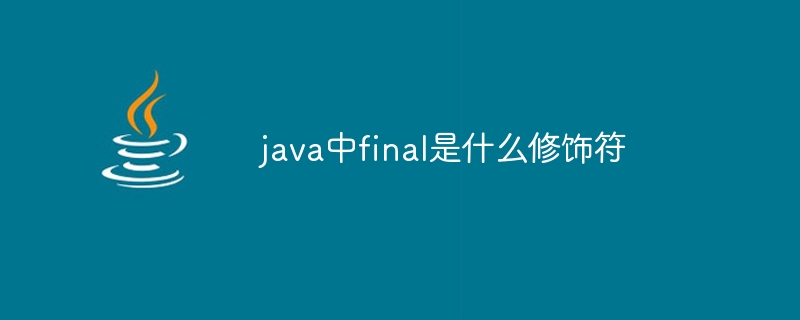
java中final是什么修饰符
Article Introduction:Java 中的 final 修饰符用于声明不可变的实体,具有三个主要用途:类:声明不可扩展的类。方法:声明不可覆盖的方法,确保行为一致。变量:声明不可修改的变量,通常用于常量。使用 final 修饰符的好处包括:提高代码安全性、效率和可读性。
2024-05-14comment 0630

How to use access modifiers in Java
Article Introduction:Access modifiers in Java are used to limit the access scope of classes, interfaces, fields and methods, and they respectively represent different access control levels. There are four access modifiers in Java: public, protected, default and private. publicpublic is the most open access modifier and is used to specify the public access level. Classes, interfaces, fields and methods modified by public can be accessed from anywhere. For example, the following code defines a public class: publicclassMyClass{//...} This class can be accessed from anywhere. Additionally, if a method or field is declared public, it can also be used anywhere
2023-05-10comment 0576

How many non-access modifiers are there in Java?
Article Introduction:Java provides some other modifiers to provide functionality beyond visibility. These modifiers are called non-access modifiers. Static Members declared as static are common to all instances of the class. Static members are class-level members that are stored in class memory. Final This modifier is used to restrict further modifications to a variable, method, or class. The value of a variable declared final cannot be modified once it obtains its value. The Final method cannot be overridden in a subclass, nor can a subclass of the Final class be created. Abstract This modifier can be used with a class or method. You cannot apply this modifier to variables and constructors. Methods declared abstract must be modified in subclasses. You cannot instantiate a class declared abstract. Synchronous This modifier is used to control multiple threads
2023-08-30comment 0641
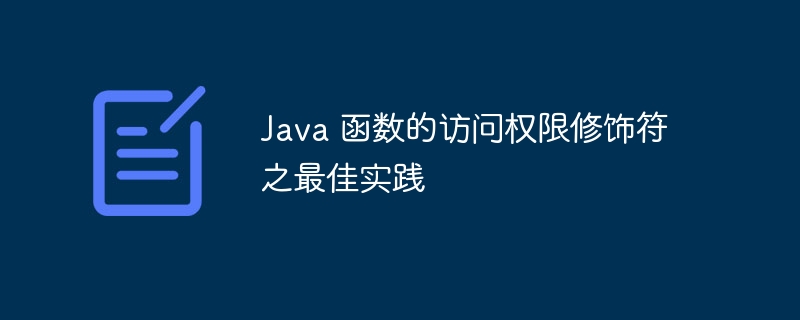
Best practices for access modifiers of Java functions
Article Introduction:Best practice for access modifiers for Java functions: Use the most restrictive modifier, which is set to private by default. Inner classes use the private modifier. Protected methods use the protected modifier to allow access by subclasses. All properties in the immutable class are set to private and accessed through getter methods. Public APIs use the public modifier so that they can be accessed by external classes.
2024-04-25comment631
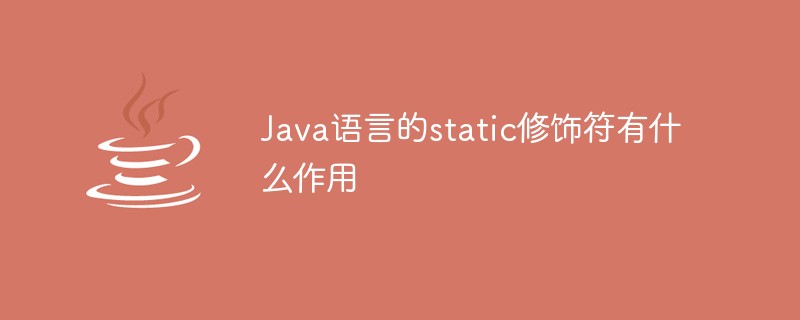
What is the function of static modifier in Java language?
Article Introduction:In Java classes, we often see the static keyword, which is often called static. Static modifier can be used to modify data members and method members, but it cannot modify classes (here refers to external classes) and constructors. Such as: packagecom.csst.vo;publicclassUser{privateStringname;privatestaticintcount;publicStringgetName(){returnname;}publicvoidsetName(Stringname){this.name=name;}publicsta
2023-04-18comment 0961
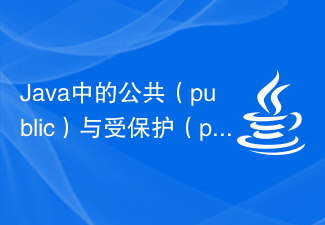
The difference between public and protected access modifiers in Java
Article Introduction:The public and protected access modifiers determine how to access members of a class or method. Modifiers are attached to members when declared. We know that these access modifiers play an important role in Javaoops concepts like encapsulation, polymorphism and inheritance. It helps prevent abuse of membership-provided features. We will try to understand the public and protected access modifiers in Java with a sample program. Access Modifiers in Java Public Access Modifiers Java does not restrict the accessibility of public members. Anything declared as public can be accessed anywhere, which means we can access them inside the class, outside the class, inside the package and outside the package. You may have noticed that in Java
2023-09-17comment 0473
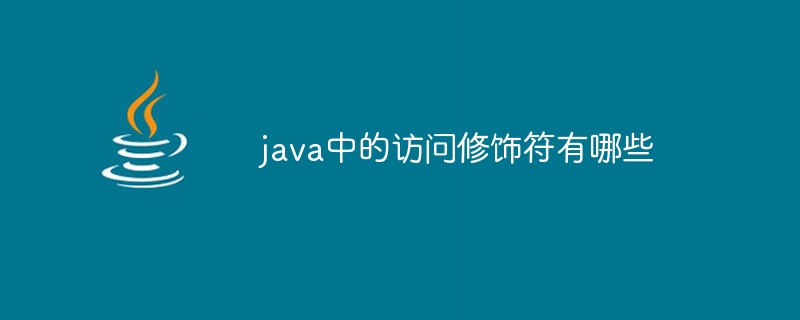
What are the access modifiers in java
Article Introduction:There are four access modifiers in Java that control member visibility: public (all classes and packages), protected (same package and subclasses), default (same package), and private (only declared classes).
2024-05-01comment 0257
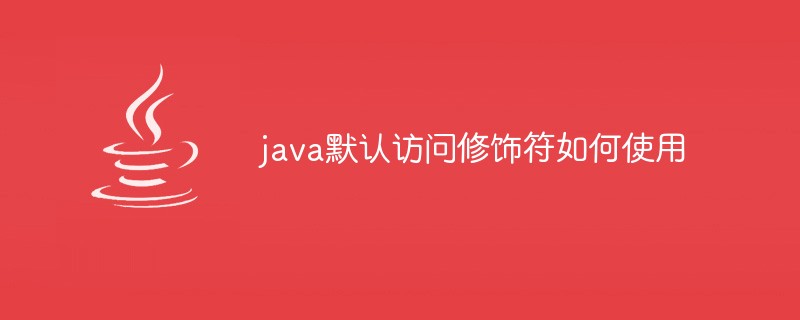
How to use java default access modifier
Article Introduction:1. Variables and methods declared using the default access modifier are visible to the class. Variables in the interface are implicitly declared publicstaticfinal, and methods in the interface have public access rights by default. 2. The declaration of variables and methods cannot use any modifiers. Example Stringversion="1.5.1";booleanprocessOrder(){returntrue;}What are the basic data types of Java? The basic data types of Java are divided into: 1. Integer type, used to represent the data type of integer. 2. Floating point type, a data type used to represent decimals. 3. Character type. The keyword of character type is “c
2023-05-18comment 0513

Detailed explanation of default access permission modifier of Java function
Article Introduction:Java's default access modifier only allows classes in the same package to access functions, and it cannot be accessed by classes in other packages. Features include: 1. Can only be used for member functions in a class; 2. Access rights are lower than public and protected, but higher than private; 3. Cannot be used with other access rights modifiers at the same time.
2024-04-25comment794
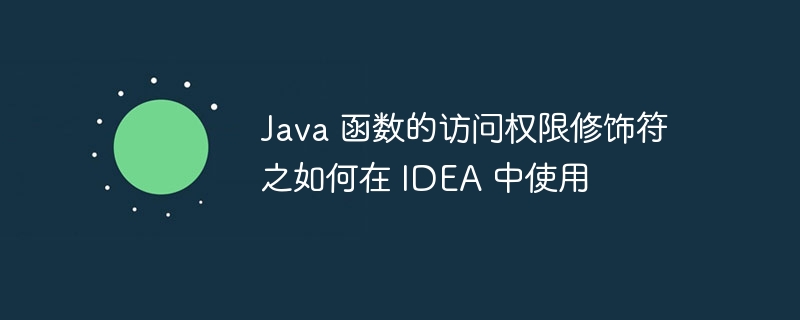
How to use Java function access modifiers in IDEA
Article Introduction:The Java access modifiers in IDEA are used to control the visibility of elements, including the following four modifiers: public: visible to any class protected: visible to the current package and subclasses default (package visible): visible only to the current package private : Visible only to the current class In IDEA, you can use right-click, shortcut key (Alt+Enter) or setting options to modify the access modifier. By setting modifiers appropriately, you can keep your code modular and safe.
2024-04-25comment 0928

How to use Java modifiers abstract, static and final
Article Introduction:Modifier abstract (abstract) 1. Abstract can modify a class (1) The class modified by abstract is called an abstract class (2) Syntax: abstractclass class name {} (3) Features: Abstract classes cannot create objects separately, but they can be declared Reference the abstract class name reference name; (4) Abstract classes can define member variables and member methods (5) Abstract classes have constructors. When used to create subclass objects, jvm creates a parent class object by default; abstract constructor methods apply Applied when jvm creates parent class object. 2. Abstract can modify methods (1) The method modified by asbtract is called an abstract method (2) Syntax: access modifier abstract return value
2023-04-26comment 0529

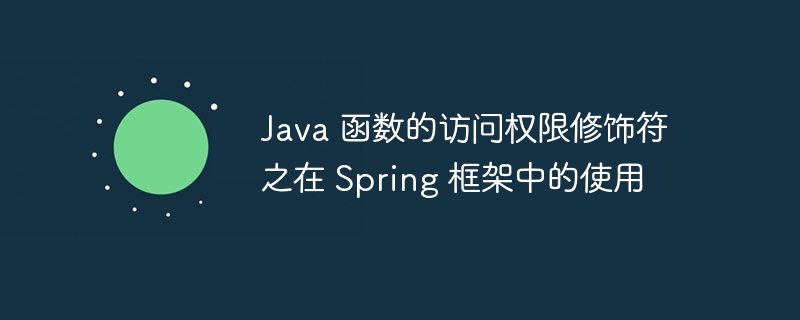
The use of Java function access modifiers in the Spring framework
Article Introduction:Access modifiers are crucial in the Spring framework and are used to control bean instantiation and usage. There are four access modifiers in Java: public, protected, default/package-private, private; the Spring framework uses these modifiers to: control bean instantiation, limit visibility between beans, ensure that subclasses override methods, and prevent specific classes from Instantiate.
2024-04-25comment445
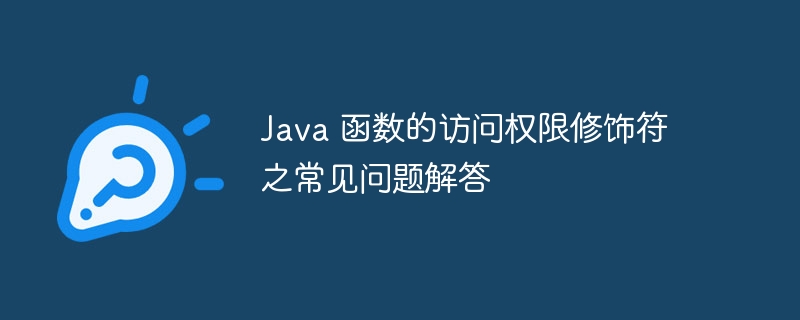
FAQ about access modifiers for Java functions
Article Introduction:Access permission modifiers are used to control member visibility. Java provides four modifiers: public (accessible to all classes), protected (accessible to classes and subclasses in this package), default (accessible only to classes in this package) , private (only accessible within this class). According to inheritance rules, subclasses inherit the access rights of the parent class, but cannot expand them. Restricting access to a class or interface can be achieved through the private modifier. The difference between protected and default modifiers is that the former allows access by subclasses and classes within this package, while the latter only allows access by classes within this package.
2024-04-26comment394


How to use non-access control modifiers in Java?
Article Introduction:1. The static modifier is used to modify methods and class variables. 2. The final decorator is used to decorate methods and variables. Final decorated categories cannot be inherited, and decorated methods cannot be redefined. Decorated variables are constants and cannot be modified. 3. The abstract modifier is used to create abstractions and abstract methods. 4. The synchronized and volatile modifiers are mainly used for programming threads. Example publicclassTest{//When defining a variable, set the initialization value finalStringf="Hello"; staticfinalStringw="Hello everyone";//Final modified variable
2023-05-09comment 01034



















